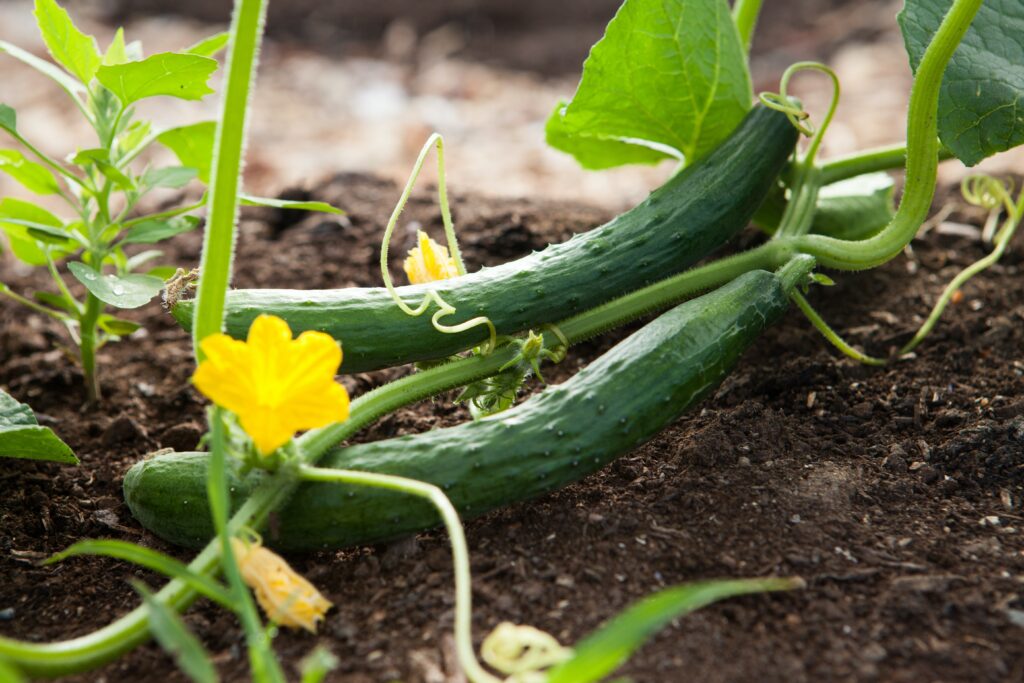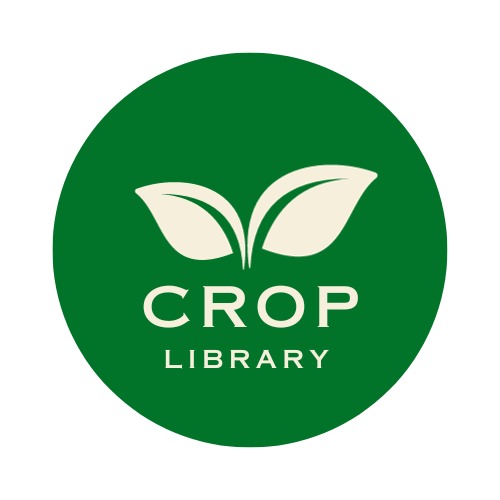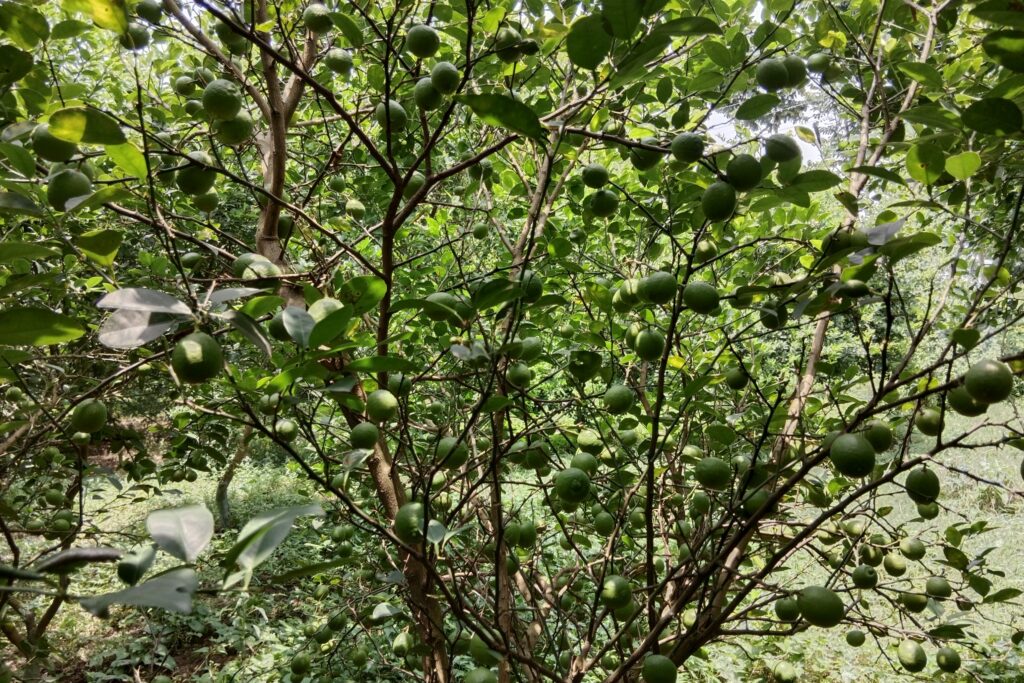Introduction
To grow cucumber is one of the most well-liked and adaptable vegetables in gardening. Not only can they provide a cool taste to your sandwiches and salads, but they’re also a pleasure to grow, particularly in small spaces. Here’s the location to grow cucumbers if you have a small garden or are seeking an easy way to cultivate them. The following article will explain how to grow cucumbers in a pot so you may have an abundance of delicious, crisp cucumbers grown at home.

What is Cucumber?
A cucumber is a widely cultivated plant from the gourd family, Cucurbitaceae. Cucumbers are typically grown for their elongated, cylindrical fruits, which have a crisp texture and mild, refreshing taste. These fruits are often consumed fresh in salads, sandwiches, and as a healthy snack. Cucumbers have high water content and are low in calories, making them a hydrating and nutritious addition to various dishes. There are different varieties of cucumbers, including vining and bush types, each with unique characteristics suited for various gardening preferences and culinary uses.
Choosing Right Pot
Before you embark on your cucumber-growing adventure, it’s essential to choose the right pot. Cucumbers have long, spreading roots, so a deep container is ideal. The container should possess adequate drainage capabilities and the capacity to hold five to seven gallons of potting mix, with a preference for larger soil volumes due to their increased water retention and stability.
Ensuring these containers are spacious enough to accommodate the plant’s root system and it allow to grow cucumber perfectly. To prevent issues like root rot and waterlogging, opt for sturdy materials such as ceramic or plastic. For vining cucumber varieties, containers with integrated trellises or support systems prove beneficial, enabling the plants to climb and utilize vertical space efficiently. Here’s what to look for in a pot:
Size
Pick a pot that has a minimum depth of 12 to 18 inches and a minimum diameter of 16 to 18 inches. At this size, the cucumber plant will have plenty of space to grow and thrive.
Material
Select a sturdy container made of plastic, ceramic, or wood. Make sure there are drainage holes in the bottom to prevent soggy roots.
Location
Place your pot in a bright area to ensure it receives 6 to 8 hours of direct sunlight each day. Warmth and sunlight are necessary to grow cucumbers successfully.
Choosing the Right Varieties to Grow Cucumber Successfully
Cucumbers come in various shapes and sizes, and some are better suited for container gardening than others. When growing cucumbers in pots, consider these two cucumber varieties:
Bush Cucumbers
Bush cucumbers are small cucumber plants with vines that are just two to three feet long. They are ideal for container gardening and do not require a trellis. These cucumbers grow beautifully in pots, spilling over the sides of hanging baskets or containers. As an alternative, a tomato cage can be used to offer support. Bush cucumber includes the following varieties:
Pick a Bushel Cucumber
An award-winning, compact variety ideal for pots, pick a Bushel produces early, versatile fruits suitable for fresh eating or pickling—harvest at three to five inches.
Salad Bush Cucumber
A standard for small gardens, Salad Bush features two-foot-long plants yielding full-sized slicing cucumbers—harvested at eight inches.
Parisian Gherkin Cucumber
Parisian Gherkin, a semi-vining cucumber with two to three-foot-long plants, produces mini cucumbers with a crisp, lightly sweet flavor—perfect for fresh consumption or pickling.
Spacemaster Cucumber
Spacemaster is a popular, compact cucumber variety, ideal for pots and hanging baskets, producing six to eight-inch-long fruits in under two months—plants reach only two to three feet.
Vine Cucumbers
Vine cucumbers are characterized by their robust and sprawling growth, extending several feet and requiring a trellis for support.
These plants thrive in larger garden spaces, offering increased yields due to enhanced air circulation and sunlight exposure.
Regular pruning and training can manage their growth effectively. Popular for pickling, vine cucumbers come in diverse varieties, each with unique flavors and textures.
Their culinary versatility extends from salads to pickles. Regular harvesting is crucial for optimal fruit production, and they flourish in well-draining soil with ample sunlight.
It includes the following varieties:
Diva Cucumber
No need for pollination, suitable for containers in bee-scarce areas.
Lemon Cucumber
Eight-foot vines, ideal for snacking, tolerate containers well.
Suyo Long Cucumber
Asian variety, long vines, perfect slicers with a slightly sweet taste.
Picolino Cucumber
Picolino, a compact cocktail cucumber, resists diseases, yielding smooth, deep green fruits on four to five-foot vines—harvest at four to five inches.
Prepare the Potting Mixture to grow cucumber
To grow cucumbers successfully need soil that drains well and is high in nutrients. Mix various components to create a nutrient-rich and well-draining medium for plants. The following ingredients are used to make an appropriate potting mix:
Peat Moss or Coconut coir
Peat moss or coconut coir, serves as a basis that is both lightweight and moisture-retaining.
Vermiculite or perlite
Improves aeration and drainage, preventing compaction of the soil.
Compost manure.
Adds essential nutrients to the mix, enhancing plant growth.
Sand
Enhances drainage and aeration, especially for container plants.
You can also include slow-release fertilizers or organic matter like bone meal for additional nutrients.
After combining these ingredients well, fill your selected pot to a few inches over the top.
How to Plant Seeds or Seedlings to Grow Cucumber Perfectly?
It’s time to sow your cucumbers now:
- If you’re using seeds, place them in the pot about 3 inches apart and 1 inch deep. Thin them to leave the healthiest seedlings once they sprout and reach a height of a few inches.
- Plant the seedlings in the center of the container, keeping in mind the plant tag’s suggested spacing.
- Since cucumbers prefer heat, they should not be planted outside until the soil has warmed up to at least 15˚ C.
- It is difficult to grow cucumbers as transplants since they usually don’t appreciate having their roots disturbed. As such, both in garden beds and containers, they are frequently sown directly.
Easy Caring Tips to Grow Cucumber Plants

Grow cucumber plants in pots require very little maintenance:
Watering
Make sure the soil is continuously damp but not soggy. Water cucumbers at the base of the plant to prevent fungal problems; cucumbers enjoy even moisture.
Fertilization
Apply a balanced, water-soluble fertilizer to your cucumber plants every two to three weeks. To determine the proper dilution, refer to the package directions.
Support
Because cucumbers are vining plants, please give them a cage or trellis to help them grow vertically.
Pruning
Pinch off the suckers, or lateral shoots, that emerge in the leaf axils during pruning. By doing this, the main stem is encouraged to grow cucumbers higher and yield more.
Control of Pests and Diseases
Be vigilant against common pests that affect cucumbers, such as cucumber beetles and aphids. When necessary, apply organic pest control techniques. Additionally, to avoid illnesses like powdery mildew, make sure there is adequate air circulation.
Harvesting Container Cucumber
Harvesting cucumbers from a container involves a simple yet strategic process:
Monitor Maturity
Regularly inspect your growing cucumber plants for mature fruits. To grow cucumbers generally need 50-70 days to harvest after planting, depending on the variety.
Check Size
When cucumbers reach the right size, usually 6 to 8 inches long for slicing categories, harvest them. Grown cucumbers can be picked while smaller to pickle.
Use Pruning Shears or a Knife
Cut the cucumber stem with a sharp knife or clean pruning shears so as not to injure the plant. simply a small portion should remain attached to the fruit.
Harvest Frequently
Harvest cucumbers regularly, every 2-3 days, to encourage continuous fruit production. Overripe cucumbers can hinder new growth.
Harvesting Technique
Hold the cucumber gently with one hand and cut the stem with the other, ensuring a clean cut without crushing the fruit.
Avoid Bruising
Be cautious not to bruise or damage the remaining vines and foliage during the harvesting process.
By following these steps, you can ensure a bountiful and ongoing harvest of fresh cucumbers from your container-grown plants. Regular harvesting also promotes the plant’s overall health and productivity.
Finally, to grow cucumbers in a pot is a rewarding experience that allows even those with limited space to enjoy homegrown cucumbers. With the right pot, cucumber variety, and care, you can look forward to a summer full of crisp, delicious cucumbers right at your doorstep.
FAQs
Q1. How to plant cucumber seeds?
To Grow cucumber seeds, one doesn’t need pre-sowing treatments like soaking. The best way to sow cucumber seeds is to put them directly into the pot or garden. When growing in the garden cucumber seeds are generally sown at 40–60 cm apart (plant to plant), with a row-row distance of 100–120. It is important to note the soil is moist, avoiding too dry or wet conditions. When conditions are right, seeds usually sprout within a week, if the soil temperature is between 18 and 35°C. Protect young seedlings from pests, animals, and unfavorable weather until they are well established in the garden to ensure their successful establishment.
Q2. When is a cucumber ready to pick?
When the cucumbers reach the right size and feel firm to the touch, they are ready to be harvested. Although the precise length varies depending on the type of cucumber, in general, they are harvested when they are 6 to 8 inches long for slicing cucumbers and slightly shorter for pickling varieties. It is important to look at the color as well; cucumbers ought to have a bright green color. Overripe and yellow fruits might result from leaving them on the vine for too long. Regular harvesting promotes continuous production, therefore check the size and color of the cucumbers and harvest them when they fulfill these requirements.
Q3. Why are my cucumber plants turning yellow?
The following may be the reason:
- Inadequate nitrogen levels can cause yellowing.
- Overwatering or underwatering can lead to yellowing.
- Pests and diseases like Spider mites, cucumber mosaic virus, and other pests or diseases can cause yellowing.
- Diseases like fusarium wilt or root rot can cause yellowing.
- High salt levels in the soil can lead to yellowing.


